Fight scenes are hard. They’re also just one of those things that most writers will have to deal with from time to time. Even the fluffiest of romance writers will have to deal with the occasional fistfight. Otherwise, how would jilted lovers passionately confront their rivals? Yu-gi-oh card duels? Actually, that might be hilarious. Lemme make a note.
As I mentioned in the introduction to this here Encyclopedia, firsthand experience with actual violence is rare in much of the world, hence the reason for writing the damn thing in the first place. But before we get to the stabby-stabs and the pew-pews, I figured it might be a good idea to go over how to actually write a fight scene.
If you read a hundred different fight scenes, no two will play out exactly the same. There’s a whole world of possibilities, limited only by the imagination of the writer. Want something gritty and realistic? You can do that. Do you want to unleash a necromantical T-rex on a hoard of zombies? It’s been done, but sure, go nuts. Anything worth doing is worth doing twice.
Now, I can’t tell you how to build the ultimate fight scene. I’d like to think I do alright in that department, but I’m not what you’d call a professional. That said, I’ve done it more than the average bear, and I have a process. That process works fairly well for me, so I figure it might help someone else get on the right track. If not, well, at least you’ll know a way that doesn’t work.
The Basics
We’re going to skip the part where we try to define a fight scene. I usually like to break things down Barney-style when starting one of these lectures, but frankly, if you’re not sure if what you’re writing counts as a fight, you’ve got more fundamental issues to deal with.
There’s some gray area when it comes to large numbers of combatants, but I’m going to go ahead and assume that you’re dealing with a reasonably manageable number. No more than, say, ten on either side. If you’ve got enough folks that you can’t follow a single perspective all the way through and tell a coherent narrative, you’ve probably got a battle on your hands, and I’ve got a guide for that coming soon.
With that out of the way, there are a few basic considerations to keep in mind as you’re planning a fight. If you go back and read that aforementioned hundred fights, you’ll find that the good ones take careful consideration of the following factors:
The stakes. All fights should have something at stake. Whether the characters are fighting for the fate of the world or simply for pride, they need to be fighting for something. Even a practice fight needs to have some sort of motivation behind it, or else, what’s the point? If your characters don’t have a reason to care, the readers aren’t likely to, either. Also, keep in mind that the scale and intensity of the fight should be appropriate to the stakes. Chances are, a friendly sparring bout isn’t going to end with someone getting their heart ripped out through their ribcage. On the other end of the spectrum, trying to slap box the big bad evil guy is going to leave everyone confused and disappointed.
The flow. The flow of a fight is determined by a number of different factors, not just the phrases of combat. (In this case, “phrase” refers to a complete cycle of reaction and action from a character. In a complete phrase, they react to their opponent’s move and respond with their own.) Simply telling the reader what’s happening as it happens makes the fight come across as stiff and mechanical. The action should be leavened by giving the readers insight into what the POV character(s) is thinking and feeling in the moment. Think of it as filling a cup with water. Try to fill it too quickly and you overflow and make a mess. Filling it too slowly takes forever, and it’s boring as hell for all involved.
The mechanics. No matter what style of fighting your characters prefer to use, you should probably know enough about it to describe it to a bystander in passing. You don’t have to be a fencing grandmaster, but if you have trouble conveying even simple concepts to the reader, it’s going to take a lot of the punch out of big, dramatic scenes. Fortunately, we have access to the total sum of recorded human knowledge at our fingertips, and a vast repository of video references to call upon at will. If you find yourself stuck, just go on YouTube and look up the style of fighting you want. Check the comments, make sure it seems reputable, and then sit back and let the experts learn you a thing or two. Just keep in mind that there’s definitely such a thing as too much of a good thing. Try to avoid excessive jargon or overly technical descriptors. Use just enough to convey that you do, in fact, know what you’re talking about, and then focus on conveying it to the audience.
The prose. Gonna ruffle a lot of feathers here, but oh well. The quality of one’s writing matters when it comes to fight scenes. I don’t just mean spelling and grammar, either, though they matter a hell of a lot. In order to effectively write a fight scene, you have to be able to convey a number of different and seemingly unrelated concepts to the reader, and you have to do it in a way that they not only understand, but enjoy. It takes time and practice to build up the experience necessary to pull it off well. Less for some folks than others, but even someone with a natural affinity for it needs to practice. If you’re really determined to get it right, you’re going to have to accept that you’ll screw up. You’re going to have to start from scratch, maybe multiple times. You’ll find a dozen wrong ways to write a fight before you find one that’s right for you.
You might be sensing a running theme here. Like all things, the trick to writing a good fight is moderation and balance. Where exactly that sweet spot is, I can’t really tell you. It largely depends on your writing style and experience level. Me personally, I tend to lean more towards the technical side of things, though I’ve been making an effort to be more expressive. Sometimes it works, sometimes it doesn’t. The important part is to keep trying until you figure it out.
The Process
Okay, now that you know what you should be looking out for when writing, it’s time to get into the nitty gritty of how I go about planning and setting up a fight.
What’s that? You’re allergic to planning?
I admit, it’s not the most fun thing in the world if you like writing by the seat of your pants. But, if you want consistent, coherent fights, you’re probably going to want to know how. Once you get a feel for what it’s supposed to look like in your style, feel free to disregard all of this. Until then, though, it’s probably best to leave the training wheels on. Or don’t. I’m not your real dad, and I’m not even sure what the hell I’m doing most of the time.
Bearing in mind that we’ll cover the steps in greater detail later on, my process looks a little like this:
Conceptualize. This is the very first thing I do after I realize that a fight is called for. I like to take a step back from what I’m doing and try to figure out what needs to happen for the sake of the plot. At the most basic level, all I’m doing is saying “okay, Bob is fighting Bill for this reason, and Bill needs to win to advance the plot.” Once I’ve figured that out, I like to take a little bit of time to think about what I want the fight to look and feel like. We’re not trying to do the most at this stage, just feeling out the edges of the concept. We can go into detail later. Right now I’m just looking at things like the setting, what weapons (if any) are being used, and get a feel for how the stakes are going to affect the scale. I also like to think up one or two key moments for the fight, some kind of setpiece that’s going to make it feel unique and badass. Nothing is set in stone at this point, so it’s okay to let your imagination run wild and dream big. You can figure out if your ambition exceeds the needs of the plot later.
Research. By now I’ve got a good idea of what I want to do, so I’ll start looking up ways to go about doing it. If I want to write an ambush scene, I might look up ways to set up an ambush in a desert, or a jungle, or whatever. If I know that one set of characters likes to use bow and arrow and they want to set an ambush, I can take that and try to take into account the strengths and weaknesses, and how the other side might counter it. If I want to write a one on one duel, I’ll explore various ways the characters can try to stab each other. Different weapons require different techniques, and they’ll interact with other weapons in unique ways. I’ll also start looking at how the environment might affect the fight during this stage. Once again, nothing is set in stone yet, so it’s okay to discard ideas or insert new ones as you go.
Storyboarding. I don’t actually draw during this stage of planning, but if that’s your thing, go nuts. The important thing is, this is the part where you break out your chisel and start laying down some foundations for your fight. How exactly you go about doing that is between you and your brain, but what I like to do is take my desired endstate and set it up as a goalpost. Once I know where I’m going, I’ll head to the start line and try to map out the shortest route between points start and finish. Usually, that looks a little something like “good guy draws his gun and shoots the bad guy. The end.” Okay, that’s concise, but it’s sort of a let down from the storytelling side. I need a stop or two along the way. “Good guy draws his gun, bad guy takes cover. Shootout ensues.” That gives me a little more to work with. I can take that idea and run with it until I’ve got something that carries narrative weight. You can get really granular with the details during this phase if you really want. I personally like to map out every phrase of the fight from start to finish. Not all of it is going to make it into the final story (more on that later), but I like to have a clear idea of what’s going on from start to finish, that way I can decide what to show, what to obscure, and so on. That won’t work for everyone, but I recommend using as much detail as you think you need.
Fight draft. A fight draft isn’t necessarily the same thing as a normal first draft. Unlike a first draft, where the point is to get everything down on paper and trust future you to make sense of it all, a fight draft is more about adding flesh to the bones of the storyboard where it needs it the most. If you’re anything like me and you’ve got a 5k word storyboard for a fight that, at most, needs to take up 800 words, you’re going to need to do some judicious trimming. The good news is, you already know what’s going to happen. You just have to pick and choose the best moments to present to the audience. I like to pick 3-5 juicy ones and flesh them out to about 100-200 words each. That’s usually enough to give them just enough meat to build on. I also like to start to incorporate character beats in this phase and narrow down the point of view to a single character. There’s room for swapping back and forth between perspectives if that’s your thing, but I really recommend hard section breaks between swaps. At any rate, once I’ve got something that looks vaguely like an end product, I’ll shove that into the draft I’m working on and forget about it for at least a few weeks.
Final draft. Okay, this is the point where I freely admit that I don’t always follow my own advice. I’m a huge proponent of the idea that first drafts are supposed to suck, and that you can fix them later. Unfortunately, I’ve been doing this for so long that I can’t actually let myself word vomit onto the page. I need shit to look nice or it drives me up the wall. That only exception is the fight draft, which I usually just shoehorn in where it’s supposed to go. Why, you ask? When you’re editing or revising, it’s always a good idea to have some space between yourself and the thing you’re trying to edit. As a rule of thumb, I like to wait at least a month, possibly longer if I have the buffer space. That way, when I come back through and re-read everything, I don’t necessarily remember all the little details I was holding in my head at the time. I don’t always know what the character is thinking at any given moment. With the help of a couple of TBIs and some trauma brain, that distance lets me gaze upon my works and despair with fresh eyes. I get to think and feel what the readers might think and feel. That, in turn, lets me look at the drafts for my fights and build them out to more accurately reflect the needs of the narrative, rather than whatever cool shit I was thinking of at the time I wrote them. The added context also lets me better weave them into the broader narrative in terms of character beats, tone, and emotional weight. Sometimes, it turns out that I nailed it the first time and I just need to clean it up a bit. Sometimes, I need to go back and start the fight from scratch to make it fit. Either way, the end result is better than if I just said yolo and sent it the first time.
So there you have it. That’s how I write my fights. I don’t follow every step, every time, but that’s mostly because I’ve been doing this long enough that I know which corners I can afford to cut. That said, I know I still have a long way to go. Improvement is a lifelong process, and I intend to keep at it until the day I kick the bucket.
Now, I promised I’d expand on things later, and I will. I’m going to sit down and dive into both the fundamental elements of a fight scene and the steps of the process in a lot greater detail than is probably necessary. Consider that more of an appendix, though. If you’re picking up what I’m putting down, you can stop here. If not, well, buckle up. This is going to hurt me as much as it hurts you.

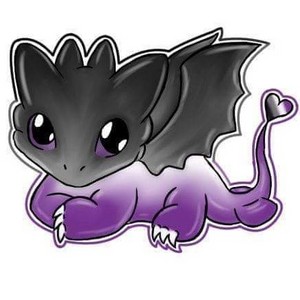


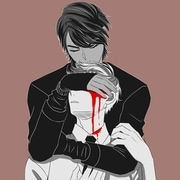


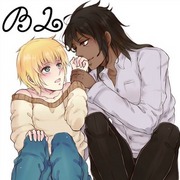

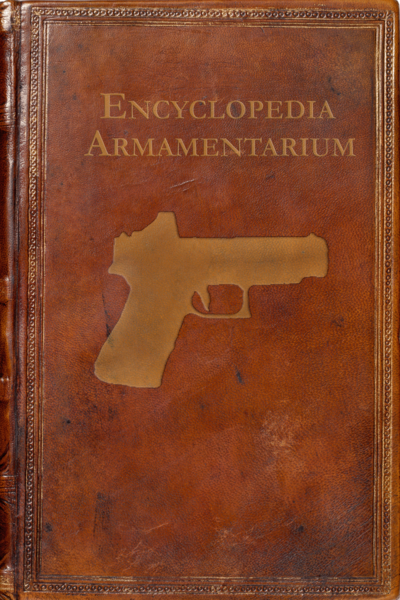
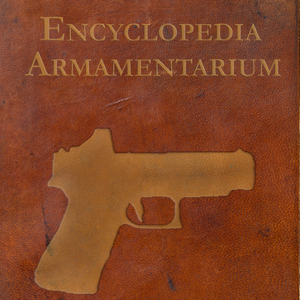
Comments (2)
See all